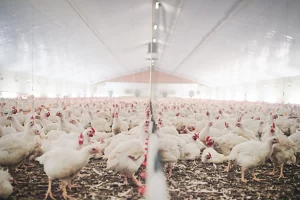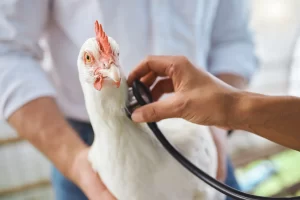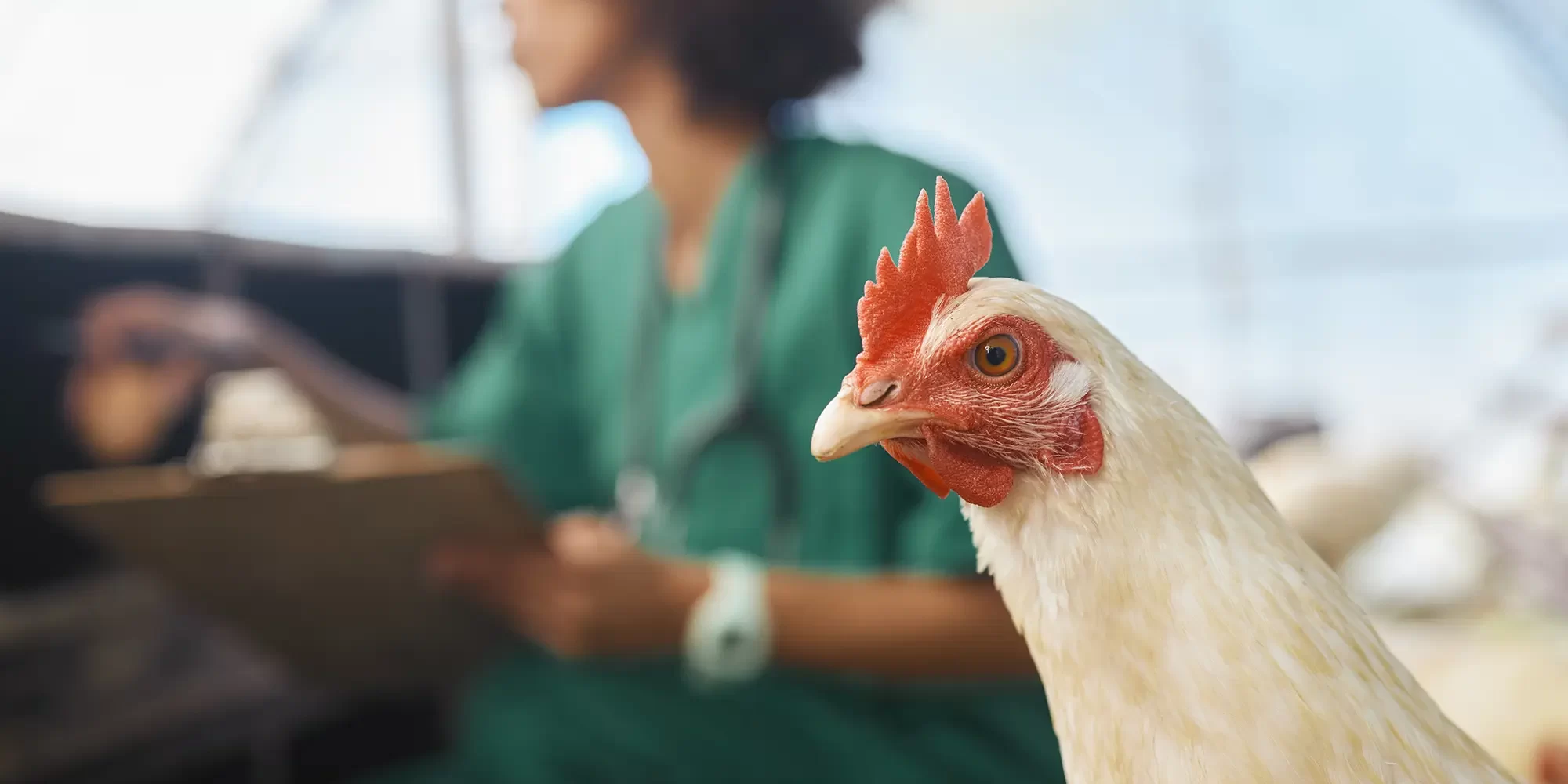Avian influenza, commonly known as bird flu, is a viral infection that affects bird species, particularly poultry.
This contagious disease can manifest in various forms, ranging from mild symptoms to severe, potentially fatal conditions.
Understanding avian influenza‘s nature, transmission, and impact is crucial for poultry farmers to implement effective prevention strategies.
The Nature and Transmission of Avian Influenza
 Caused by influenza type A viruses, avian influenza occurs worldwide, with waterfowl being natural reservoirs of the virus. The disease spreads through direct contact with infected birds, contaminated surfaces, feed, water, and through airborne secretions. Its rapid transmission can lead to significant outbreaks, affecting poultry health, productivity, and the broader agricultural economy.
Caused by influenza type A viruses, avian influenza occurs worldwide, with waterfowl being natural reservoirs of the virus. The disease spreads through direct contact with infected birds, contaminated surfaces, feed, water, and through airborne secretions. Its rapid transmission can lead to significant outbreaks, affecting poultry health, productivity, and the broader agricultural economy.
Impact on Poultry Farms
The repercussions of avian influenza extend beyond animal health, affecting farm productivity and profitability. Infected birds may exhibit symptoms such as respiratory distress, reduced egg production, and increased mortality rates. In severe cases, avian influenza can necessitate culling entire flocks, leading to substantial economic losses and challenging recovery processes for affected farms.
Preventive Measures and Biosecurity
 Preventing avian influenza involves stringent biosecurity measures to minimise the risk of virus introduction and spread within poultry farms. Key practices include controlling farm access, ensuring feed and water safety, regular disinfection of equipment and facilities, and monitoring bird health diligently.
Preventing avian influenza involves stringent biosecurity measures to minimise the risk of virus introduction and spread within poultry farms. Key practices include controlling farm access, ensuring feed and water safety, regular disinfection of equipment and facilities, and monitoring bird health diligently.
Chlorine Dioxide: A Proactive Disinfectant
In the context of avian influenza prevention, Chlorine Dioxide (ClO2) emerges as a powerful ally for poultry farmers. As an effective disinfectant, ClO2 can significantly reduce the presence of pathogens, including viruses, in the farm environment, thereby playing a crucial role in biosecurity protocols.
The Role of Chlorine Dioxide in Avian Influenza Prevention
While Chlorine Dioxide is not a cure for avian influenza, its use as part of a comprehensive biosecurity plan can help prevent the disease’s onset and spread. By disinfecting water supplies, surfaces, and equipment, ClO2 mitigates the risk of virus transmission, creating a healthier environment for poultry.
Scotmas’s Contribution to Poultry Farm Protection
Scotmas specialises in providing advanced Chlorine Dioxide solutions tailored to the unique needs of poultry farms. With expertise in water treatment and surface disinfection, Scotmas equips farmers with the necessary tools to enhance biosecurity, safeguard flock health, and maintain farm productivity amidst the threat of avian influenza.
Understanding avian influenza’s implications and adopting effective preventive measures are essential steps in protecting poultry farms from this pervasive disease. By integrating Chlorine Dioxide into their biosecurity strategies, poultry farmers can leverage a potent disinfectant to reduce the risk of avian influenza, ensuring the well-being of their flocks and the sustainability of their operations.
Contact us for more information on how Scotmas’s Chlorine Dioxide solutions can support your avian influenza prevention efforts.






